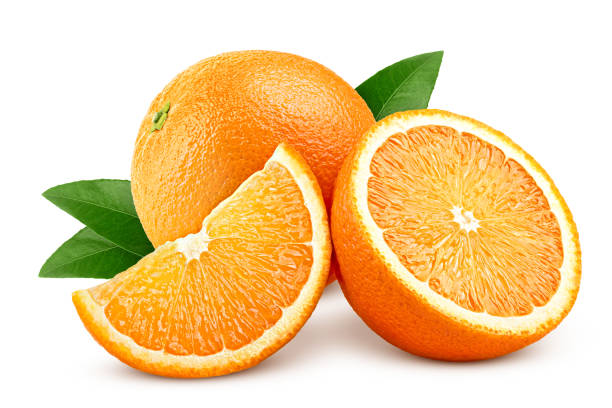What does the word citron mean?
Citron, also known by its scientific name Citrus medica, is a citrus fruit native to the Himalayan region. Its scientific name comes from Latin and literally means “medicinal lemon.” The etymology of the term “citron” is interesting. It is derived from the Greek word “kedros,” meaning “cedar,” as the fruits of the citron tree have a shape reminiscent of the cedar cone.
There is no direct connection between cedar and citron, however, as citron is more closely related to the Rutaceae family, which also includes other citrus fruits such as oranges, lemons, and grapefruits.
In the beginning…
The citron has been cultivated since ancient times in the Himalayan region. It gradually spread to other parts of the world. The citron was known and appreciated in ancient Egypt, where it was considered a sacred fruit. The Egyptians used it not only for its juicy pulp and fragrant zest, but also for its essential oil, which was used for cosmetic and medicinal purposes. The citron also played an important role in Jewish culture, to the point of being sometimes called the “Jewish citron.” It is associated with the holiday of Sukkot, where it is used in rituals and decorations in the “sukkah” (“booth” or “hut” in Hebrew). According to Jewish tradition, the citron represents fertility and abundance.
Over time, the citron spread to other parts of the world. Phoenician traders and Roman explorers introduced it to the Mediterranean, where it became popular in the cuisine and medicine of the time. The Arabs also played a role in the spread of the citron, transporting it along trade routes to Europe and other regions. During the Middle Ages, the citron was cultivated in southern Europe, particularly in Italy and Spain. It was used in the preparation of jams, liqueurs, and perfumes. During the Renaissance, citrus fruits, including the citron, became increasingly popular throughout Europe, particularly as luxury ingredients in cooking and perfumery.
The origin of the citron dates back thousands of years. It originated in the Himalayan region of what is now northern India. Researchers believe that the wild citron (Citrus medica var. sarcodactylis) is the ancestor of all cultivated citron varieties today. This wild variety is characterized by its elongated fruits and finger-like lobes, reminiscent of a hand. This resemblance has earned it the common name “Buddha's hand.”
The cultivation of citron
Today, citron is cultivated in several regions of the world, primarily in Mediterranean and subtropical climates suitable for citrus cultivation. It grows in Italy, Spain, Israel, Corsica, and California.
Planting a citron tree is an important process that requires care and attention. Before planting the citron tree, it is important to choose a suitable site. A sunny location that receives at least 6 hours of direct sunlight per day will do. The soil in the site should be well-drained to prevent water from pooling around the tree's roots. If the soil is clayey or compacted, it is recommended to amend it by adding naturally occurring organic matter, such as compost or potting soil. This improves its structure and ensures better moisture retention. The size of the planting hole is also important. It should be twice as wide and deep as the citron tree's root ball. This will allow the roots to spread easily into the soil.
As the citron tree grows, the roots spread out into the soil, seeking water and essential nutrients. The stems grow and produce new green leaves that capture sunlight for photosynthesis. This vital process allows the plant to produce carbohydrates and energy to support its continued growth.
The flowering period is a key moment in the development of the citron tree. Flower buds form and transform into beautiful white or pink flowers. These delicate flowers often give off a sweet fragrance and attract pollinators, such as bees, butterflies, and other insects. Cross-pollination allows the ovules to fertilize, resulting in the citron fruit. The citron fruit gradually develops from the fertilized flowers. They go through different growth phases, expanding to their characteristic size and shape. The citron is recognizable by its oval or oblong shape, sometimes resembling that of a hand or fingers. Its thick, bumpy skin protects its juicy, aromatic flesh. The citron reaches full maturity after several months of development . At this stage, the fruit's skin turns a bright yellow color and its fragrance is fully released. The ripe citrons can then be harvested.
Citrons are harvested when ripe, usually in late autumn or early winter. Citron trees are carefully inspected to identify fruits ready for harvest. Citrons are hand-picked to avoid damaging the delicate skin. Once harvested, the citrons are sorted to select the best specimens. They can then be used to extract their essential oil, their zest can be used to make jams or liqueurs, and their juice can be used in cooking or cosmetics.
What did you know about citron in perfumery?
Citron processing and transformation involves several steps to obtain the final products. First, after harvesting, the citrons are thoroughly washed to remove impurities and dirt. Then, the fruits are peeled to obtain the zest, which is the most commonly used part of the citron. The zest can be used fresh, dried, or transformed into essential oil through a distillation process. Furthermore, citron can also be transformed into juice by pressing the fruits to extract the liquid. This juice can be used to flavor drinks, desserts, or culinary dishes.
Citron belongs to the citrus family. Its scent is often described as crisp, lemony, floral, and fresh. It has tangy, sparkling notes reminiscent of lemon, but with a more subtle and delicate undertone. Citron also exudes light floral accents and a slight bitterness that adds complexity to its scent profile. Its vibrant, zesty scent makes it a popular ingredient in perfumery. It is often used to bring a touch of energy and freshness to fragrance compositions. Citron can be used as a lively and sparkling top note in perfumes to bring a sense of dynamism and effervescence from the very first notes.
The citron accord creates a lively and energizing olfactory experience. Combined with citrus fruits like lemon and bergamot, it offers a sparkling freshness. Aromatic notes like rosemary and mint add an invigorating dimension. Delicate florals, such as orange blossom and neroli, bring softness and subtlety. Woody and musky accords, such as cedar and musk, add warmth and depth. In harmony, this accord creates dynamic and stimulating fragrances, capturing the lively energy and freshness of citron for a harmonious olfactory experience.
Good to know!
Citron is a citrus fruit with multiple health benefits and virtues. Indeed, this fruit is full of beneficial qualities for our bodies. First of all, its richness in vitamin C makes it an ideal ally for strengthening our immune system and protecting us from disease. Furthermore, citron is an excellent source of dietary fiber, thus promoting good digestion and preventing intestinal problems. Its antioxidant content helps fight free radicals and prevent premature aging of our cells. Finally, citron essential oil can be used in aromatherapy, a form of alternative medicine that uses plant essential oils to improve physical, mental, and emotional health.
Some legendary citron fragrances...
Here is a selection of renowned fragrances highlighting the refreshing, citrusy essence of citron:
• Cédrat Enivrant by Atelier Cologne : A sparkling fragrance for men and women that captures the energy and liveliness of citron, combined with notes of citrus and wood.
• Eau de fleur de cédrat by Guerlain is a luminous and refined eau de parfum that celebrates the tangy freshness of citron. This floral and fruity fragrance combines notes of citron, white flowers and musk, creating a delicate and captivating bouquet. Eau de fleur de cédrat by Guerlain captures the spirit of summer and evokes a sunny stroll in a Mediterranean garden.
• Cologne Extra Vieille by Roger & Gallet is a classic and timeless cologne that evokes French elegance and refinement. This aromatic and woody fragrance combines notes of bergamot, lavender and patchouli, creating a harmonious and sophisticated blend. Cologne Extra Vieille by Roger & Gallet embodies the heritage and know-how of the house for over a century, offering a sensation of freshness and a touch of tradition to the wearer.
• Dior Homme Sport Eau de Toilette by Christian Dior is a dynamic and energizing fragrance that embodies the sporty and elegant spirit of the house. This fresh and aromatic fragrance blends notes of lemon, ginger, and cedarwood, creating a vibrant and modern composition. Dior Homme Sport is the perfect companion for the modern man, combining sophistication and vitality for a distinctive olfactory experience.
These renowned fragrances capture the vibrant and invigorating spirit of citron, offering unique olfactory compositions and evoking the freshness and brightness of citrus fruits.









